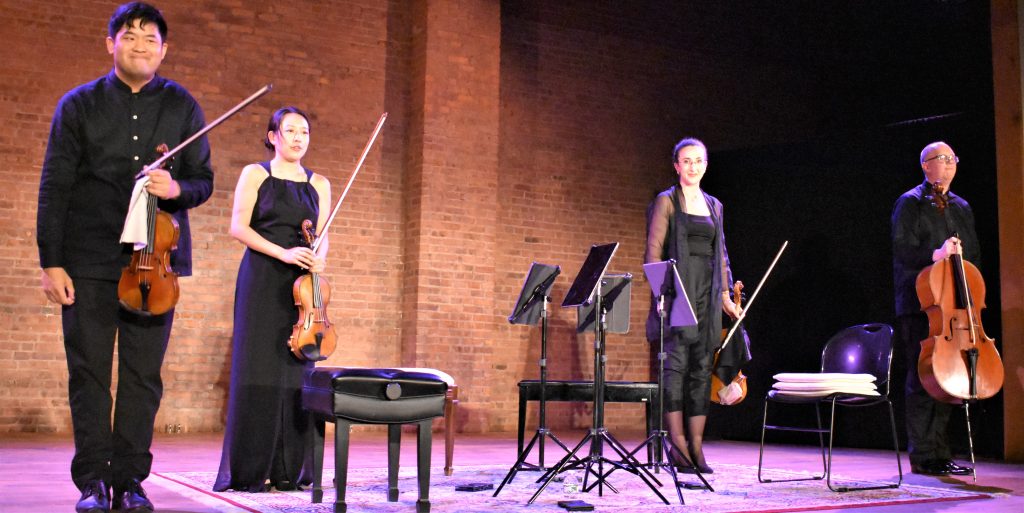
by Kevin T McEneaney
Last Saturday night at The Stissing Center, the Verona Quartet, residing at Oberlin University, presented the first concert in the annual Clarion Concert series founded by Eugenia Zuckerman. This was an intriguing program of three string quartets, opening with String Quartet No. 1 in E-flat Major, Op. 12 by Felix Mendelssohn, which was his second quartet composition, yet first in the order of publication (1829) when he was twenty years old. Begun earlier in Berlin, the work was completed in London on the 14th of September 1827, four days after he returned to London, those four days being the likely composition of the fourth movement. The lyrical opening remains arresting, announcing a new talent of genius. One of the interesting aspects of this work consists of the use of fragments as a cyclical technique, along with song-like refrain, which may have come about from Felix’s constant dabbling in painting and quick sketches (as well as songs); sketches can be desultory, fragmented depictions of moods. (His letters are full of sketches.)
In reaction to the first World War, Claude Debussy began composing in fragments, as in Sonata for Flute, Viola and Harp, L.137 (1915-16), because Claude saw European Civilization destroying itself and yet illustrating how various fragments might cohere into more complicated and unified structures. Perhaps Claude conceived of this approach through Felix’s string quartet. T.S. Eliot, who was deeply influenced by music, appropriated the concept of fragments from Debussy for his early poetic work The Wasteland (1922). The 424 lines of the poem (as competently edited by Ezra Pound) are predominantly translations of nineteenth century French poets. (Pointillism, painting with fragmented dots, had been developed in France in 1886 by Georges Seurat and Paul Signac.)
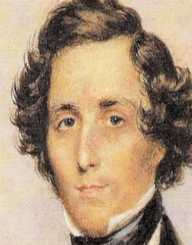
While Felix Mendelssohn, who was an accomplished English language speaker, had a sunny personality, he also had acquired the aloof nickname of “the discontented Polish Count.” Overwork sometimes resulted in occasional collapses when his world appeared to fragment. The last two movements of the quartet appears to limn his experiences in England. especially Wales. In the opening Allegro, Jonathan Ong on first violin sounded as if he was knitting elements of nature into a holistic pattern. Critics have noted the influence of Beethoven’s String Quartet in E, Op. 74 as shaping the harmonic thrust of the work, yet this offers but a single appropriated influence (instead of the hundreds hungrily appropriated by Eliot). What we have here in the extraordinary lyricism is a celebration of a new environment in the last two movements, both rural countryside (trees, leaves, streams, hills, rocks, waterfalls, and meadows in Wales) and the bustling vitality of London (the concluding vivace), at that time the largest city in Europe. Abigail Rojansky on viola delivered much of this lyrical lift, while Ong on violin sang poignantly with heightened liquidity and passion.
I appreciate concerts programs when an often-neglected work is re-interpreted with maximum perception by the performers.
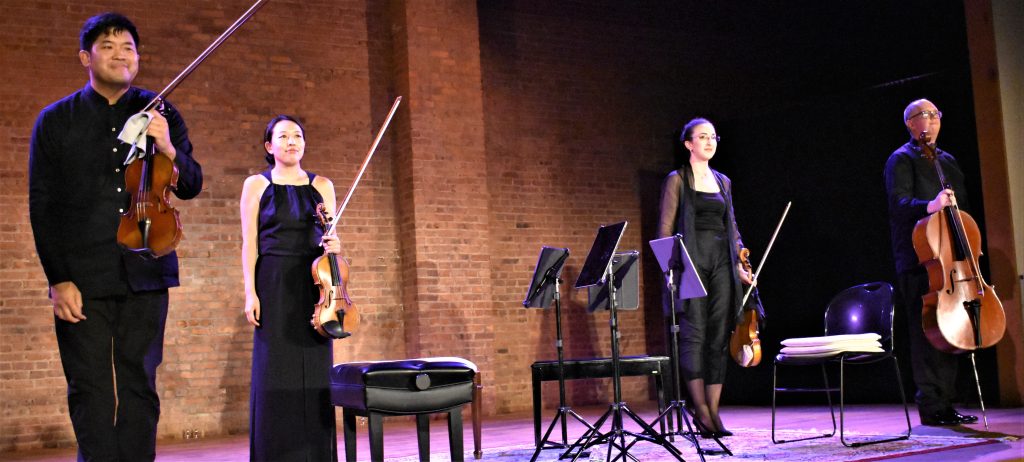
Likewise, String Quartet No. 4 (1952) by Grażyna Bacewicz, a young prodigy and a student of Nadia Boulanger, is the best known and most often performed among her seven string quartets arresting violin concertos, although she remains rarely performed in this country. As far back as 1948, she had begun using Polish folk-tune themes in her Violin Concerto No. 3. In this string quartet folk themes first appear in four bars from the lead violin as mazurka fragments, which will grow in greater significance. A rocking melody by cellist Jonathan Dormand, played with great subtlety, signals the birth of a Polish Renaissance in music. The second movement unveils a lullaby melody and secondary threads with shading by the second violinist Dorothy Ro. The third movement Allegro functions as a traditional Scherzo (joke) as it dramatizes the playfulness of burgeoning youth with pizzicato amid a simple 2/4 rhythm. The fourth movement Finale, which features dramatic accelerando by all four united performers, announces the maturity of this Polish musical Renaissance. The bright colors of the work remain captivating amid traditional folk-song motifs.
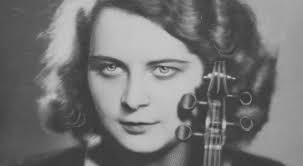
After intermission they performed String Quartet in F Major, No. 7, Op. 58, No. 1 by Ludwig van Beethoven; it is nicknamed “Razumovsky” after the Russian Count who commissioned three quartets from Beethoven. This festive work is less opaque than many of Beethoven’s compositions. The opening Allegro with Dormand on cello conjured wonder at the rising of the sun on a pleasant autumn day. The lively Scherzando painted the feverish preparations for the coming equestrian hunt with dogs. The third movement described the feast after the hunt by the assembled noblemen: their boasts, jokes, and convivial conversations. The melancholy fourth movement dramatizes the dilemma of the composer—he is an outsider hired to entertain the nobility: he is not really a vital or even necessary element in the festivities any more than one of the dogs. Who knows if he will be invited or paid again? A musician or composer lives a life in the dark shadows of night, his labor forgotten by the merrymakers. This vein of maudlin pathos remains empathetic and perhaps more fatalistically acceptable to Russians. The music is haunting and powerful, so that the final irony is that we recall Beethoven’s pageant the Romantic musical poet-outcast rather than the anonymous faces of the noblemen who fade into the night. In the finale Ong and Dormand were ferocious and eloquent.
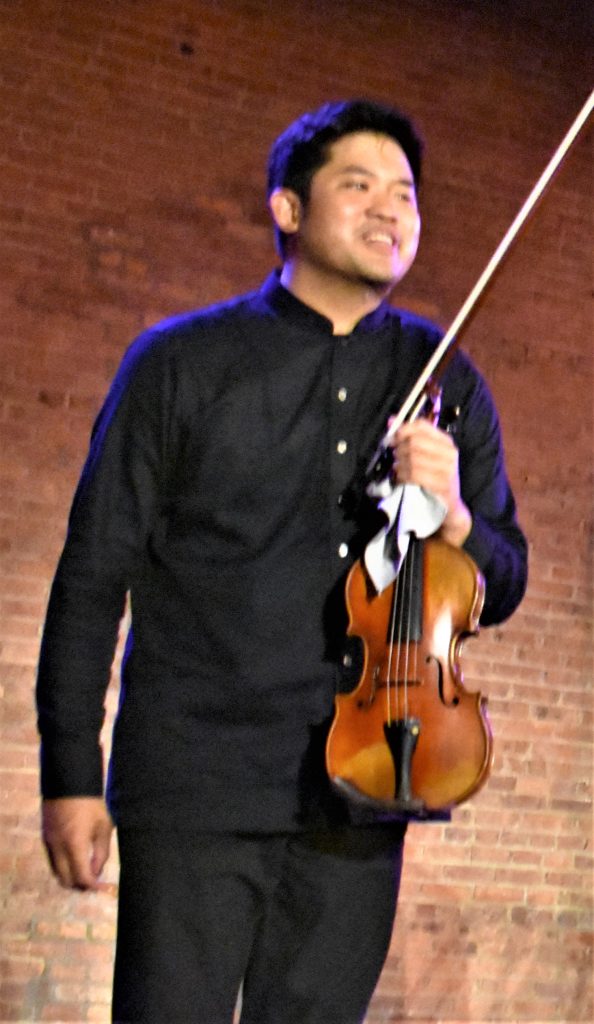
It appeared poetically appropriate that attendees had to drive to their home amid shrieks of aerial lightning illuminating the overhead sky—as if we had heard and witnessed a great performance that was nearly taboo to hear!